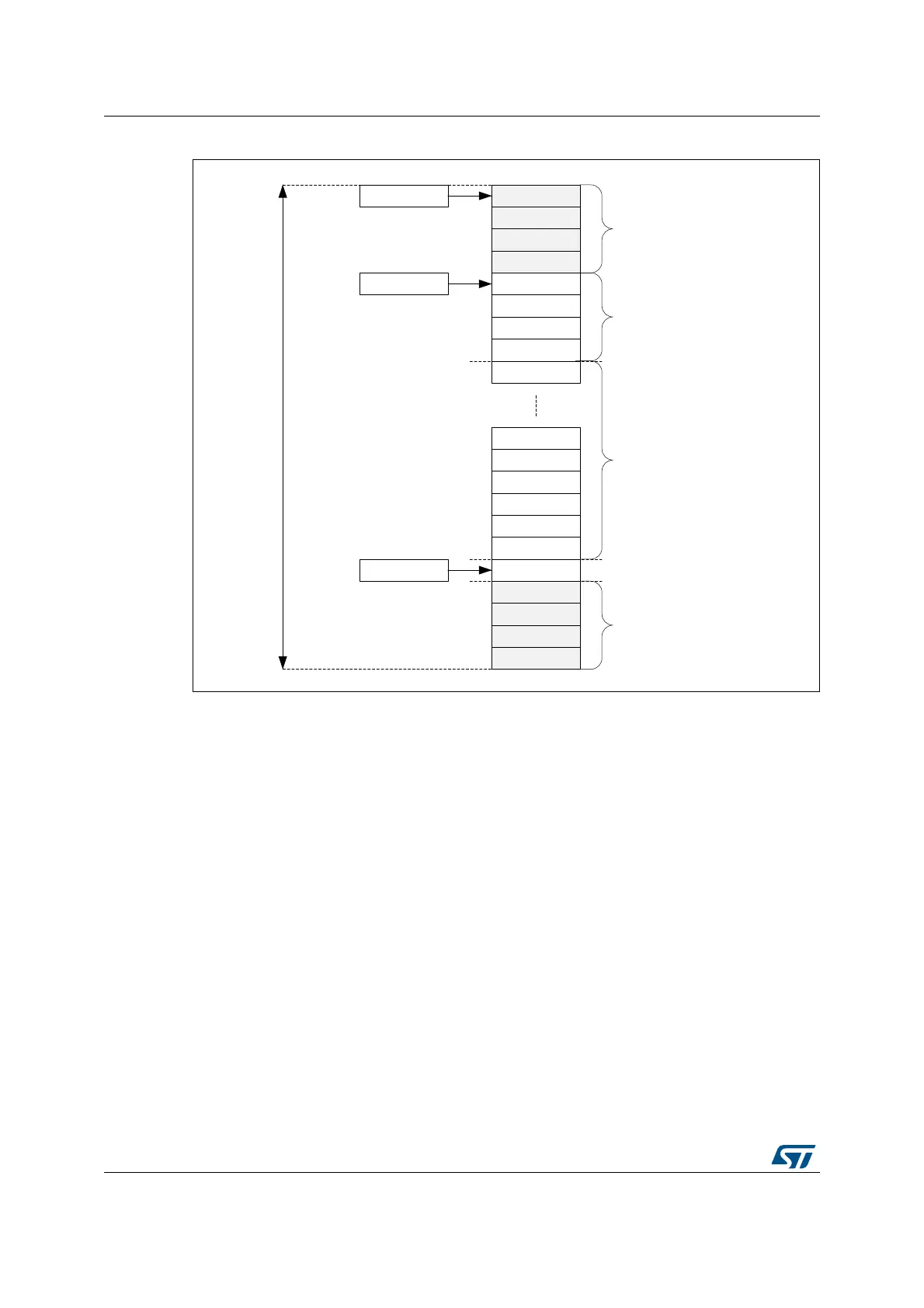Filter math accelerator (FMAC) RM0440
492/2126 RM0440 Rev 4
Figure 45. Circular output buffer
The Y buffer can also operate as a circular buffer. If the address for the next output value is
the same as that indicated by the read pointer (ie. an unread sample), then the buffer is
flagged as full and execution stalled until the sample is read.
In the case of IIR filters, the Y buffer is used to store the set of M previous output samples,
y[n-M] to y[n-1], used for calculating the next output sample y[n]. Each time a new sample is
added to the set, the least recent sample y[n-M] drops out.
If the number of unread data in the buffer is less than the watermark threshold programmed
in the EMPTY_WM bitfield of the FMAC_YBUFCFG register, the buffer is flagged as empty.
As long as the empty flag is not set, interrupts or DMA requests are generated, if enabled, to
request reads from the buffer. The watermark allows several data to be transferred under
one interrupt, without danger of underflow. Nevertheless, if an underflow does occur, the
UNFL error flag is set. In this case, the read pointer is not incremented and the read
operation returns the content of the memory at the read pointer address.
The operation of the Y buffer in circular mode is illustrated in Figure 46. This example shows
a 7-tap IIR filter with a watermark set to four.
y[n]
Read pointer
y[n-1]
y[n-2]
y[n-3]
y[n-4]
y[n-5]
y[n-6]
y[n-M]
These samples in use
for calculating y[n]
These samples not yet read
Available buffer space
Available buffer space
y[n-M-4]
y[n-M-3]
y[n-M-2]
y[n-M-1]
Next sample
y_buf_size
y_base
MSv45873V1
